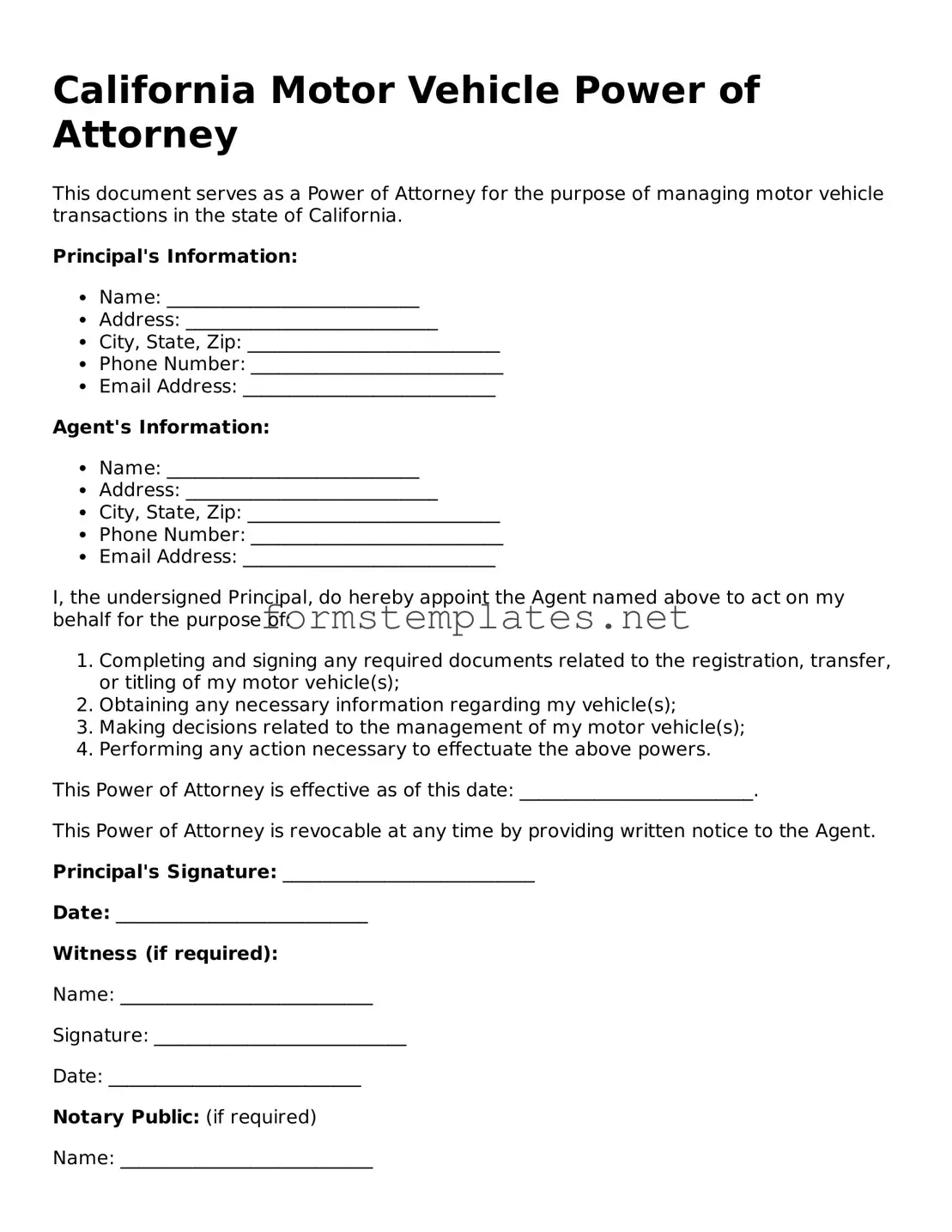The California Motor Vehicle Power of Attorney form is a legal document that allows one person (the principal) to authorize another person (the agent) to act on their behalf in matters related to motor vehicles. This includes tasks such as transferring ownership, registering a vehicle, or handling other related transactions with the Department of Motor Vehicles (DMV).
Who can be a principal and who can be an agent?
In California, any individual who owns a motor vehicle can be a principal. The agent can be anyone the principal trusts to handle their vehicle-related matters, such as a family member, friend, or attorney. It’s important to choose someone responsible, as they will have the authority to make decisions regarding the vehicle.
The Motor Vehicle Power of Attorney form can be used for various transactions, including:
-
Transferring ownership of a vehicle
-
Registering or renewing vehicle registration
-
Obtaining a duplicate title
-
Submitting documents to the DMV
This flexibility makes it a valuable tool for vehicle owners who may not be able to handle these tasks in person.
To complete the California Motor Vehicle Power of Attorney form, follow these steps:
-
Download the form from the DMV website or obtain a physical copy.
-
Fill in the required information, including the names and addresses of both the principal and the agent.
-
Specify the powers granted to the agent, ensuring they align with your intentions.
-
Sign and date the form in the presence of a notary public, if required.
Ensure that all information is accurate to avoid complications when the agent uses the form.
Notarization is not always required for the California Motor Vehicle Power of Attorney form. However, having the document notarized can provide an extra layer of authenticity and may be beneficial when dealing with the DMV or other institutions. It is advisable to check specific requirements based on the transaction.
Can I revoke the Power of Attorney once it is granted?
Yes, you can revoke the Power of Attorney at any time as long as you are of sound mind. To do this, you should create a written notice of revocation and provide it to the agent. It’s also a good idea to inform the DMV and any other relevant parties to ensure that your previous agent no longer has authority over your vehicle matters.
What happens if the agent misuses their authority?
If an agent misuses their authority, the principal may have legal recourse. It is essential to choose a trustworthy individual as your agent. If misuse occurs, the principal can revoke the Power of Attorney and may also consider legal action to recover any losses incurred due to the agent's actions.
There is typically no fee for completing and submitting the California Motor Vehicle Power of Attorney form itself. However, there may be fees associated with specific transactions at the DMV, such as transferring ownership or registering a vehicle. It's wise to check the DMV's fee schedule for any applicable charges.
Once completed, the California Motor Vehicle Power of Attorney form should be submitted to the DMV along with any other required documents related to the transaction. Depending on the nature of the transaction, you may also need to provide identification or proof of ownership.
How long is the Power of Attorney valid?
The Power of Attorney remains valid until it is revoked by the principal or until the specific transaction is completed, depending on the terms outlined in the document. If you have ongoing needs, you may want to consider specifying a time frame or conditions under which the authority will expire.
